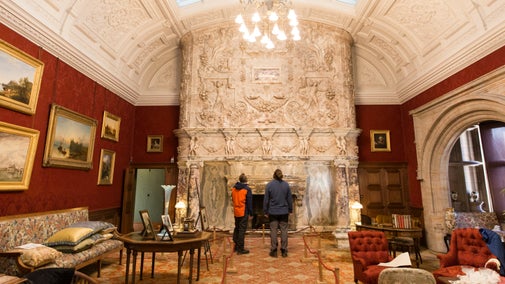The ancient town of Winchelsea
Created by Edward I in 1288 as a replacement for Old Winchelsea, which washed away during heavy storms, the town sits on top of Iham Hill, overlooking the English Channel and the Brede Valley.
The hill already held a small settlement, including the church of St Leonard, but Edward had grander ideas. Three men, Stephen de Pencester, Henry le Waleys and Gregory de Rokesle, were instructed to design streets and lanes, a market place and sites for two churches. Altogether Edward took 149½ medieval acres, keeping 12 acres for himself.
Winchelsea became a Cinque Port in the twelfth century and The Corporation continue the tradition of electing a mayor and jurats.
Visiting Winchelsea
Laid out in a grid pattern with the church at its centre, the town is easy to explore. Winchelsea railway station is a 15-minute walk from the centre and buses from Hastings and Rye also stop in the town. By car, Winchelsea is located on the A259 between Hastings and Rye and on-street parking is available.
If you are coming to explore we have made a couple of handy maps to get you started, which show the public and permissive footpaths.
Historic buildings in Winchelsea
Small but beautiful, Winchelsea is full of interesting buildings, including some cared for by the National Trust, such as the Rookery and Blackfriars Barns and Salutation Cottages.
If you follow the 1066 Footpath south-westward you will pass the remains of St John’s Gable, formerly a medieval hospital, and arrive at the magnificent Wickham Manor (not open to the public).
This medieval manor house was once owned by the Penn Family, founders of Pennsylvania in the United States of America. Continue on, and a glorious view of the Pett Levels and the English Channel opens up, underlining the strategic importance of the town’s location.
Walking on history
Follow Mill Road westward from the town, taking care as you cross the A259, and you will arrive at the Beacon. This mound was the former site of a windmill and before that, St Leonards Church. There are great views of the Brede Valley from here and the network of ditches that drain the land can be clearly seen.
Look harder and you may spot the remains of the former tidal creeks that flowed here. With an original estimated population of between 4,000 – 6,000 people, much of this land contains undiscovered archaeology - you will be walking above long-forgotten streets and houses.
Medieval cellar tours
Step into the story of this ancient town with a tour of its medieval cellars. Winchelsea has some of the finest medieval cellars in the country, dating back to the foundation of the town in about 1290. Although the cellars have been in use for centuries, it's thought that they were mainly used for storing wine imported from France during the 13th and 14th centuries.
Today you can still marvel at these hidden wonders on a guided tour, which take place on most Saturdays between April and October. For dates and times see Winchelsea Cellars tours website.
Please note that these tours are not operated by the National Trust and there is a charge, including for National Trust members.











































